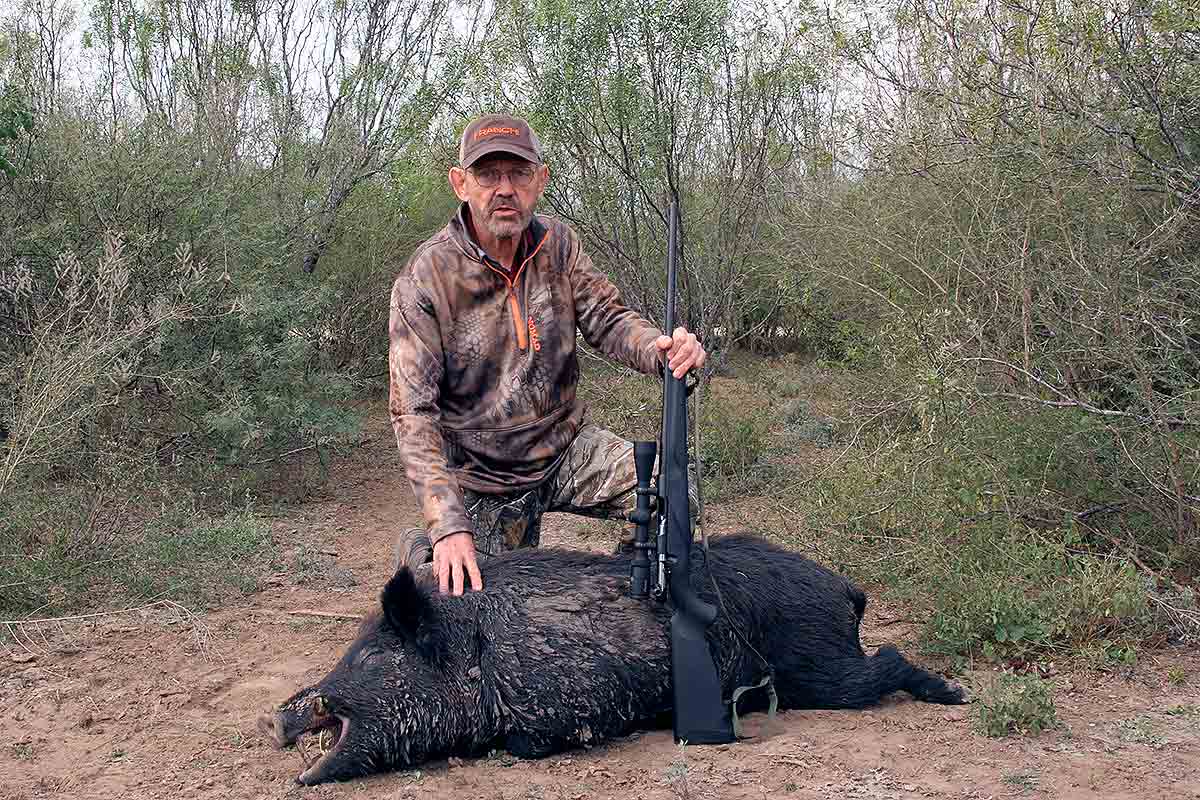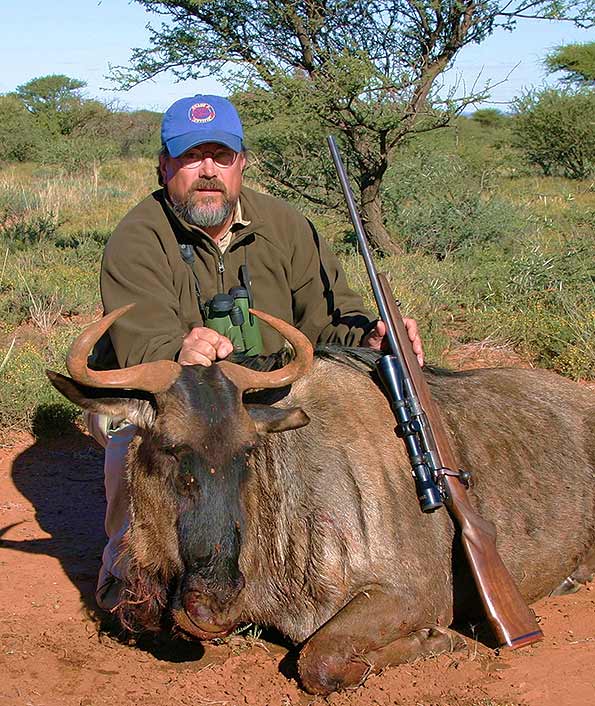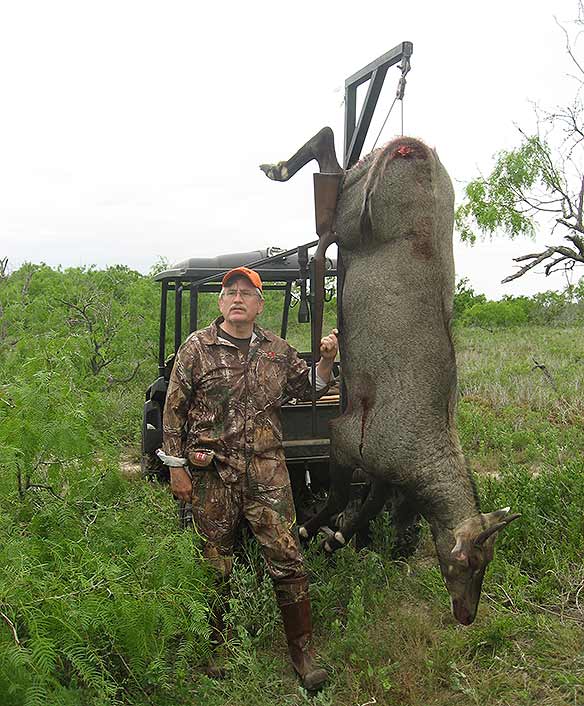BULLET FIELD-TESTING
by John Barsness

EVERY TIME we use a bullet on big game, we’re “field-testing,” but too many hunters rely on examples of one. One bullet on one deer doesn’t really mean much, especially if the tester’s one of those convinced there’s only one way for big game bullets to behave appropriately. There’s also the simple fact that not every animal reacts the same way to being shot. We might shoot 10 similar-sized deer with the same bullet placed through both lungs and see 10 pretty different reactions.
Plus, many (if not most) bullet companies construct the “same” bullet differently in various calibers and weights, with larger bullets often made tougher because they’re more likely to be used on animals larger than deer. As a result, it’s a mistake to assume every Stumpknocker bullet from 6mm to .375 expands and penetrates exactly the same way.
Recently we’ve also seen a bunch of long-range hunting bullets introduced, designed specifically to expand more reliably at ranges beyond 500 yards, while most big game bullets are designed for ranges under 500 yards. Consequently somebody who, for whatever odd reason, picks a long-range bullet for use on woods whitetails, feral pigs under corn-feeders, or black-timber elk may be disappointed. Yet every year I get reports from hunters who’ve done exactly that, often with poor results. Or at least what the hunter considers poor results.

One recent example was a young man who used a Nosler AccuBond Long Range on a close-range bull moose in Alaska. Exactly why is a mystery, since he never shoots big game much beyond 300 yards. The ABLR killed the moose quickly, but the hunter was disappointed in how little shank remained on the recovered bullet. This is exactly the problem described by: “the tester’s one of those convinced there’s only one way for big game bullets to do their job.”
While some bullets do a pretty good job of expanding and penetrating at both closer and longer ranges, there always have to be compromises. Nosler Partitions do a pretty good job at both, because the lead alloy used in the front core is softer than the lead alloy in any “cup-and-core” big game bullet I know of. But some hunters whine about the middling ballistic coefficients of Partitions, which is why Nosler brought out the AccuBond, and especially the AccuBond Long Range — but then some hunters complain when they don’t act EXACTLY like Partitions when they hit game.
A few hunters also whine about how much weight Partitions lose, especially hunters who believe higher retained weight is the entire answer to “killing power.” They’re apparently unaware that Partitions vary in construction, not only with different lead alloys in the rear core but the placement of the partition itself.
Partitions that might be used frequently on “deer-sized” game, primarily .30 caliber and under, have the partition placed so the bullet retains less weight. John Nosler had hunted plenty of big game experience before designing his original bullet, and had concluded deer usually die quicker when part of the bullet disintegrates.
I’ve been using Partitions since the late 1970’s and while the vast majority exited, my collection of recovered bullets shows considerable variation in weight retention. Most recovered Partitions of .30 caliber or under retained 60-70% of their weight, but three extreme outliers retained 54%, 56% and 90%. Perhaps not so oddly, the two lighter bullets killed a good-sized Montana mule deer and a Shiras bull moose very quickly. The bullet that retained 90% of its weight, because it lost very little front core, didn’t kill so quickly. The animal was a big-bodied Alberta mule deer, in fact one of the two heaviest mule deer I’ve taken. Though the buck fell after the shot, it staggered to its feet again as I approached, and required another shot to finish the job, despite the first bullet passing through both lungs.
Partitions primarily used on game larger than deer have the partition placed further forward, so the bullet retains a minimum of around 75% of its weight. However, only one I’ve recovered was that light, a 286-grain 9.3mm that hit the big shoulder joint of a 600-pound wildebeest and was found under the hide at the rear of the ribcage on the opposite side. It weighs 212 grains, 74% of its original weight, while the others (all .338 to .416 caliber) retained 85-95%.
Nosler also varies the construction of their other big game bullets along the same lines, as do many other companies. Even the expansion characteristics of cup-and-core bullets can be easily modified not just by the thickness of the jacket, but core hardness and the shape of the tip.
Many companies also change the construction of their bullets over time, with Hornady Interlocks a good example. When I started using Hornady Spire Points they didn’t have the Interlock ring inside the jacket to limit expansion. They still performed pretty well, due to a relatively hard core alloy, but overall performance became better with the addition of the Interlock ring, with expansion usually stopping right at the ring.

Another variable is velocity at impact — and also at the muzzle, since how fast a bullet spins can affect expansion, and spin decreases far slower than velocity. This is one reason moderate muzzle velocities normally result in more consistent bullet performance, even with cup-and-core bullets. But it’s also why long-range bullets sometimes “over-expand” at closer ranges, especially in calibers such as 6mm and 6.5mm, which these days often feature faster rifling twists to stabilize longer high-BC bullets.
A much rarer reason for performance variation is glitches in manufacturing. I know of three companies, all producing bullets with sterling reputations, that had faulty bullets leave the factory since 2000. Not many of the defective bullets found their way into hunters’ hands, due to frequent bullet testing in expansion media at the factories, but anything mass-produced by humans can occasionally be imperfect.
As a result of all this, judging the performance of all of a certain brand and type by the results of a single bullet simply isn’t valid. In a way, it’s comparable to refusing to buy a Ford or Dodge pickup because your grandfather bought one that turned out to be a real lemon.
How many animals does it take to get a handle on bullet performance? I generally like to see at least half a dozen big game animals taken before starting to form an opinion, but more is better, the reason it’s become far more common for bullet companies to perform considerable field-testing with a new bullet before it appears on the market.
The largest field test I know of was performed around a decade ago by a European company which introduced what might be called “small estate” bullet. In Europe (and many other parts of the world) game on private land belongs to the landowner. If you shoot a deer on your property and the animal dies on the neighbor’s place, legally it’s the neighbor’s deer.
Consequently, European hunters often prefer bullets that kill quickly, and not just with the “bone” shots some American hunters sometimes use to stop game. European game meat is also legally sold on the market, like domestic beef and pork in America, so landowners make more money if the bullet’s placed through the ribs, where it doesn’t ruin as much meat. This bullet/ammo company tested its new bullet on over 500 animals before starting to sell them to hunters. Not so oddly, the bullet’s designed to partially disintegrate, like Nosler Partitions.
American bullet companies usually don’t field-test new designs on several hundred animals, but do far more field-testing than they used to, partly because some bullets that perform well in test media didn’t always work the same when shot into game. Often the bullets are tested in Texas, because of abundant feral pigs that can be shot in unlimited numbers, but field-tests are also performed in other places around the world, particularly Africa and New Zealand, again because of numerous animals that sometimes need culling.
I’ve taken part in quite a few of these field tests, and on other occasions have even been provided with prototype samples of bullets to take on my own hunts, so compare against the performance of other bullets. The biggest was a month-long meat hunt in South Africa, where a dozen hunters ended up taking close to 200 animals from springbok to Cape buffalo. On that hunt my hunting partner and I took around a dozen animals from springbok to blue wildebeest with prototype Nosler E-Tips, sometimes with shots deliberately placed to test penetration.
However, many test-hunts performed by bullet companies involve one specific bullet in a single cartridge, providing consistent samples. One took place on the King Ranch of Texas in 2002, where 15 hunters were allowed to take two nilgai apiece, a bull and a cow. All the rifles were chambered for the then-new .270 Winchester Short Magnum, and the ammo all loaded with 140-grain Fail Safe bullets. At first the Texas guides were very skeptical about using “.270’s” on elk-sized nilgai, because both bulls and cows have a reputation for being hard to kill. In fact, many nilgai outfitters recommend a minimum of .300 magnum, and some even suggest .375’s.
By the end of the hunt everybody had taken two nilgai, a total of 30 animals, plus a number of javelina and pigs, and the guides all regarded the .270 WSM as a very good nilgai round. Of course, some of this was due to using deep-penetrating Fail Safes, but some was also due to most of the hunters being better-than-average shots.
The same guides had also been in charge of a similar test-hunt the year before, when another group of hunters used .300 WSM’s with 180-grain Fail Safes. Several nilgai were wounded on that hunt, apparently because some hunters didn’t place their shots well — which can definitely be a factor in field-testing. Whether the poor shot placement was due to shooting ability, or the heavier recoil of the .300 WSM, is also a good question.
Only one bullet “failure” occurred on the .270 WSM hunt, when one hunter shot a bull nilgai and it ran off, never to be found. The guide said he saw a puff of dust erupt on the broadside bull’s shoulder, a third of the way up the body, so it was assumed the bullet failed to expand. This isn’t unknown with hollow-point bullets.
However, when you don’t have a dead animal to analyze, placement assumptions can be faulty. The last Texas hunt I took part occurred in December of 2017, and wasn’t actually a specific cartridge/bullet test. Instead several writers and shooting-industry people used new (and at the time top-secret) rifles, all chambered in .308 Winchester, with factory ammo loaded with 150-grain Hornady SST’s. We were each allowed to take three whitetails — a doe, cull buck and trophy buck — along with unlimited pigs. However, because we often didn’t want to shoot a nearby pig because the report might spook a big buck possibly lurking in the surrounding cover, we ended up taking about 20 animals, rather than the dozens theoretically possible. Still, the deer and pigs ranged up to around 200 pounds in weight on the ranch’s scale, and all were taken at less than 200 yard, due to the thick brush of South Texas.
To be honest, I hadn’t had vast amounts of experience with SST’s, partly because early field reports suggesting they over-expanded, like early Nosler Ballistic Tips. Among the animals I had seen taken, however, was an elk shot with a 180-grain SST from a .300 WSM. The bullet was recovered under the hide on the far side of the chest, perfectly expanded — but the shot was around 400 yards, where the bullet had slowed down considerably, and didn’t hit bone heavier than ribs.
The biggest buck taken on the Texas hunt was standing quartering toward the hunter at much closer range. He aimed at the point of the shoulder, and said that’s where the reticle was when the rifle went off. He expected the buck to drop quickly, but instead it turned and ran into the brush. The guide had videoed the shot with his smart phone, and when they checked the video, it looked like the bullet had hit the shoulder, right where the hunter aimed.
They waited a few minutes before following the blood, and after 100 yards the buck jumped up and staggered off, bouncing off a few trees and bushes. They took the up the trail again, but soon the blood trail disappeared.
At that point they assumed the bullet might have broken up on the shoulder, so decided to go get a tracking dog, legal in Texas. When they returned, the dog quickly found the dead deer, but it had traveled quite a ways beyond where they’d last jumped it, because despite what they thought they saw in the video, the bullet had NOT hit the shoulder bone. Instead it entered the ribs just behind the shoulder, only damaging one lung — and exited the abdominal cavity on the opposite side of the buck. The problem wasn’t a faulty bullet, but faulty shot placement. So unless we find the animal, we can’t always assume a bullet landed where it was aimed, even when there’s a video (or a puff of dust) supposedly showing where it landed.
The one whitetail I took was a cull buck, standing broadside at about 150 yards. The bullet broke both shoulders and exited, the buck dropping instantly, though his hind legs still pushed him around 50 feet before the deer ran into a small tree. The biggest pig was a boar, also shot through considerable neck and shoulder bone, plus the cartilage shield, but that bullet exited too. In fact, every SST exited every animal we weighed at the skinning shed, and several others were also shot through bone heavier than ribs.
The listed velocity of that factory load is 2820 fps, which is pretty moderate — one reason the .308 Winchester (and other cartridges producing similar velocities, such as the 7×57) have such good reputations for performance with cup-and-core bullets. But there weren’t any of the gaping entrance holes often reported by SST users, even when the bullets landed right on shoulder bone. Because no bullets were recovered, we don’t know how much weight they retained, but we do know they retained enough to exit every animal, sometimes after a couple feet of penetration. That was enough evidence to convince me to definitely start using more SST’s for my own deer hunting.
Stay Connected
- Got a Break in the Montana Missouri Breaks
- It Took Six Days but We Finally Slipped One Past the Bears and Wolves
- No Mule Deer This Fall – Whitetail TOAD!
- An Accounting of Four Idaho Bulls (Elk)
- Arizona Deer Hunt 2019: Good Times with Great Guys
- Caught a Hornady 143 ELDX Last Night
- Cookie’s 2019 Mule Deer Photo Run
- Let’s See Some Really Big Deer
- Alaskan Moose Hunt Success!
- Take a Mauser Hunting: An Important Message From The Mauser Rescue Society!
- Welcome 16 Gauge Reloaders! Check In Here.
- Off-Hand Rifle Shooting – EXPERT Advice
- BOWHUNTING: A Wide One!

